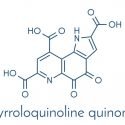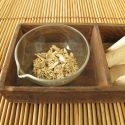Meal Replacement Shakes Dangers, Side Effects and Alternatives
Why Meal Replacement Shakes?
Preparing healthy, homemade meals is a goal many of us have, but finding the time to plan, shop, cook, and eat mindfully can sometimes be difficult.
Many people turn to meal replacement bars, shakes, and snacks to get the calories they need, and these meal alternatives just keep growing in popularity.
But these options may not always be the healthy choices you imagine them to be.
Our guide will help you understand what’s in your meal replacement shakes, including the not-so-healthy ingredients, and natural alternatives you can make at home.
There are other reasons people turn to meal replacement shakes besides being too busy to cook.
Those with digestive problems like Crohn’s disease, gastritis, and ulcerative colitis, as well as the elderly, sometimes lack sufficient appetite and are unmotivated to eat.
They may use these nutritional supplements to get the calories they need to supply energy for their bodies.
Others use these products to help them manage their weight.
Regardless if you use meal replacement shakes for convenience or to get sufficient nutrients to be healthy, these food choices may not be the healthiest options for you.
While they may be convenient, they often have serious drawbacks that you should consider carefully before opting for them.
Not all are the healthy alternatives you believe them to be.
Most contain excessive amounts of sugar, chemicals, and other processed ingredients you definitely don’t need your food.
So, what can you do if you need help getting the high-quality nutrition that is convenient and easy?
Our guide will provide you with excellent alternatives to liquid meals that will give you plenty of energy and will keep you satisfied throughout your day.
Keep reading to learn more about the dangers of meal replacement shakes and about healthier, natural alternatives for your diet.
What are Meal Replacement Shakes?
Meal replacement shakes are designed to provide quick, easy nutrition for people with many different needs.
Most meal replacements are bottled drinks you consume in place of one meal per day.
Some shakes are designed to help you increase caloric intake, while others are meant to help you lose weight.
All are supposed to help you get the calories and nutrients you need from a liquid meal.
People select meal replacement shakes for a variety of reasons.
The most common include:
- Not having enough time to prepare and/or eat a full meal;
- Lacking the appetite or energy to consume enough calories to support your needs;
- Reducing caloric intake to promote weight loss.
Meal replacement bars and supplemental snacks are also available for those looking to stay satisfied between meals, maintain consistent blood sugar, or prevent overeating.
These packaged foods often contain the same troubling ingredients found in meal replacement shakes, including excessive preservatives, which allow them to remain stable on the shelf for extended periods.
Ingredients in Meal Replacement Shakes
One of the most popular replacement shakes on the market, especially for the elderly and those with medical issues is Ensure®.
Ensure® products are marketed to people choosing meal replacements shakes for all of the above reasons, but what they don’t advertise are the chemicals and ingredients they use that cause inflammation and other metabolic imbalances.
If you are looking for high-quality nutrition from these types of products, you may be surprised to learn that Ensure® can contain any of the following ingredients: vegetable oils, including corn and canola, soy lecithin, artificial flavors, cellulose gum, choline chloride, cellulose gel, carrageenan, dl-alpha-tocopheryl acetate, pyridoxine hydrochloride, sodium molybdate, sodium selenite, and phylloquinone.
Not sure what these ingredients are? Most people aren’t.
The average serving of Ensure® Plus also contains 22 grams of sugar and less than one gram of dietary fiber.
Most of the vitamins and minerals are synthetic or added, and not from whole foods.
Reasons to Avoid Meal Replacement Shakes
Too Much Sugar
To make meal replacement shakes appealing and tempting, they are often made with dessert flavors like chocolate, salted caramel, and cookies and cream.
These shakes are often even labeled as low-calorie, but nearly all are loaded with either sugar or artificial sweeteners.
The second ingredient listed on one of the most popular weight loss meal replacement shakes is actually sugar!
No matter why you are choosing meal replacement shakes, sugar is empty calories.
Sugar contributes to spikes in blood sugar, changes in mood, energy crashes, upset stomach, and increased levels of inflammation (1).
Synthetic Minerals and Vitamins
The types of minerals and vitamins in most meal replacement shakes come from synthetically-derived versions rather than those found in whole, natural foods.
These chemicals are hard for your body to absorb, so you may not be getting the real benefit of the advertised essential vitamins and minerals.
Opting for unprocessed, whole foods as the source of your vitamins and minerals provides your body with the needed components for healthy living in a form your body can use correctly.
Artificial Ingredients
Meal replacement shakes often contain multiple, highly-processed ingredients.
Refined vegetable oils, like corn and canola, promote inflammation.
These inexpensive oils can easily become rancid over time, but unfortunately are present in many products.
Other artificial ingredients common in meal replacement shakes are cellulose gel or carrageenan.
Carrageenan has been linked to digestive disorders and symptoms that resemble toxicity, mainly when it is frequently consumed (2).
Other preservatives, like maltodextrin, cause blood glucose spikes because of their high glycemic index.
Other troubling artificial ingredients, like sucralose and aspartame, can cause headaches, weight gain, and other health problems (3).
Ingredients that Promote Indigestion
Many turn to meal replacement shakes and other foods because of dental, digestive, or aging issues that make eating solid, fibrous foods difficult.
But meal replacement shakes may make some medical conditions worse.
With high amounts of sugar, they can cause increased dental decay, inflammation, and changes in the hormones that control your mood and energy.
If your digestive system is sensitive or has trouble absorbing nutrients, the synthetic nutrients, chemicals, and preservatives in meal replacement shakes are often difficult for your body to handle.
Meal replacement shakes also lack antioxidants, fiber, and probiotics, all of which are necessary for immune system health and effective digestion.
Without these, the impact of aging is also accelerated.
Meal replacements can, therefore, lead to issues with your gut health and inflammation problems throughout your body.
Lack of Fiber and Protein
A healthy diet consists of a well-rounded variety of foods, especially high-quality protein and dietary fiber.
These components of your diet improve your digestion, help you feel satisfied, support the healthy functioning of your brain, and support hormonal balance and a robust immune system.
Very few meal replacement shakes contain high-fiber foods, like vegetables, fruit, seeds, or nuts.
You are likely to feel hungry again soon, despite the high calories that most of them contain.
And the protein comes from highly-processed protein powders and dairy products.
Eating whole foods with natural nutrients and amino acids help you feel satisfied and stay healthy.
Not Good for Long-Term Weight Management
Shedding pounds is a goal for many these days, and while it may be tempting to skip a meal in favor of a meal replacement shake, this strategy will not likely lead to long-term success in weight management.
Most meal replacement shakes leave you feeling low in energy and deprived, and can cause food cravings.
Meal replacement shakes can cause spikes in your blood sugar, as well, which can lead to insulin resistance and other problems.
If you are trying to lose weight and drop many pounds quickly, there is a great deal of evidence to suggest you are likely to regain that weight (4).
And since meal replacement shakes, bars, and meals are not a long-term strategy for healthy eating, it is essential that you instead learn how to eat healthier, control portions, and manage cravings.
Teaching yourself how to cook healthier foods, eating whole, nutrient-dense foods, and adjusting your lifestyle are much more likely to lead to long-term weight management success.
Common problems reported with dieters who use meal replacement shakes is that they often quit using them within four months.
Most report hunger, cravings, fatigue, and feelings of deprivation.
Empirical evidence of the efficacy of meal replacement shakes is challenging to collect, so evidence is lacking (5).
What You Are Replacing is Not Equivalent
For those using meal replacement shakes, bars, and other snacks for convenience and to help with a busy schedule, it is important to remember that you are replacing a full meal with a processed food.
If you want to replace a meal, you should do so with equivalent nutrients, fiber, and vitamins, or you are doing your body a disservice.
Meal replacement shakes are misnamed, as you are substituting whole, healthy foods with something processed and lacking in the essentials your body needs to be healthy.
They Don’t Satisfy Your Brain
The act of sitting and eating a meal is an integral part of your relationship with food.
When you don’t eat actual food, your brain is missing a part of the meal experience it craves.
So, even when the nutritional aspects leave you feeling full, your mind may still be indicating it needs something else.
Because meal replacement shakes deprive you of the communal elements of eating together and the routines of preparing food, you may end up not feeling full, even if your stomach has been satisfied.
Those who use meal replacement shakes regularly are also likely to get bored with this food option.
Real food is varied and has many different flavors and textures.
Liquid diets lack the variety we crave, making this choice difficult for many to use on a regular basis.
Quality Alternatives to Meal Replacement Shakes
If you are looking for ways to get quality nutrition for your busy lifestyle, there are some better alternatives than the meal replacement shakes currently on the market.
However, eating real, whole foods is the most effective way to support your body’s health.
There are ways to include these healthy ingredients into foods that are convenient and portable, and we offer some good alternatives here.
A meal replacement should keep you feeling satisfied and provide you with sufficient energy.
While whole foods like vegetables, fruit, nuts, and other portable items allow you to eat on the go, as well, liquid options do exist that help you get the nutrition you need.
Realistically, busy and chaotic life can make it hard sometimes to cook healthy meals.
So, having something you can consume quickly when you need it can be a necessity for many who have busy schedules or competing demands.
Smoothies
Smoothies are a popular choice for many people looking for a liquid meal replacement.
It is crucial that your smoothie contains the right balance of foods to get the essential nutrients, proteins, healthy fats, and dietary fibers that are lacking in packaged meal replacement shakes.
Here are some suggestions that will make your homemade smoothie healthier and more nutritious.
- Raw Ingredients
Fresh fruit and vegetables are important staples for your smoothie.
Bananas, mangoes, avocados, spinach, kale, pineapple, raw honey, and berries are all excellent choices to serve as the base for your smoothie.
- Healthy Fats
Coconut butter or cream, avocados, nut kinds of butter, seed kinds of butter, chia seeds, flax seed, and hemp are all good sources of healthy fats, like omega-3 fatty acids.
- Whole Food Fiber
Dried fruits, oats, quinoa, buckwheat, sweet potatoes, and coconut flour can add fiber to your smoothie, helping you stay satisfied and feel full longer.
- Additional Protein
Eggs, tofu, white beans, yogurt, and quality protein powders can supply you with the protein you need to feel healthy and satisfied.
- Liquid Base
Coconut water, filtered water, nut kinds of milk, and kefir are excellent base liquids that add nutrients to your smoothie and will help keep you hydrated.
The following are two of our favorite green smoothie recipes that provide quality nutrition, combined with easy-to-drink portability.
- Easy Green Smoothies
In a blender, combine two cups of tightly-packed leafy greens of your choice.
Spinach or Swiss chard are good options.
Add water or coconut water to cover the greens, then blend until most of the chunks have been broken up.
Add in one-half cup each of pineapple and mango.
Add two tablespoons chia seeds, one tablespoon almond butter, and one-quarter cup rolled oats.
Blend again, adding additional liquid to get your desired consistency.
You can also add ice cubes to the final blend if you like your smoothie cold, or you can use frozen fruit.
- Easy Berry Smoothies
In a blender, combine one cup of frozen raspberries, three-quarters cup unsweetened plain almond milk, and a small handful of pitted cherries.
Add a small squeeze of raw honey, two teaspoons of freshly grated ginger, one teaspoon flaxseed, and two teaspoons of lemon juice.
Blend until smooth. For additional protein, add one-half cup silken tofu, or one scoop of high-quality protein powder.
This will make two servings.
Pureed Soups
If you want to enjoy a hot food on the go, why not try pureed soups?
By combining healthy ingredients like vegetables, herbs, broths, and quality proteins, you can create a delicious soup that, once pureed, can be consumed just like a smoothie or meal replacement shake.
And the bonus is you control all the ingredients that go into your soup.
Making large batches that can be frozen means you don’t have to cook constantly, either.
Bone Broth
There are many quality, natural bone broth powders available today that make it easier than ever to enjoy this healthy food.
Bone broth is rich in antioxidants, electrolytes, collagen, amino acids, and other healthy nutrients.
Bone broth can be used in soups, shakes, smoothies, and many other convenience foods to provide you with the nutrition you need on the go.
Plant-Based Protein Powders
There are also high-quality, plant-based protein powders available that make excellent additions to your smoothies, soups, and other foods.
These are free of the synthetic fillers and ingredients, making them easier for your body to absorb.
Pea protein, hemp protein, and grass-fed whey are all newer, healthier alternatives.
Portable Whole Foods
In addition to liquid alternatives, there are plenty of portable foods that you can eat on the go, and carry with you to support your energy needs.
Yogurt from grass-fed cows, nuts, seeds, and fresh fruits and vegetables are all nutrient-dense, portable foods.
Other portable foods that don’t require refrigeration and are good for eating on-the-go include:
- Rice cakes with nut butter;
- Roasted chickpeas;
- Dried fruit;
- Homemade fruit leather;
- Plantain chips;
- Mixed nuts or trail mix;
- Pumpkin seeds.
Alternatives for Digestive Problems
If you currently use meal replacement shakes because of digestive issues, some options can improve your eating habits and help you feel better, too.
- Eat small meals more frequently throughout the day. This will help stabilize your blood sugar, control your appetite, and provide your sensitive system with smaller amounts of food to digest at a time.
- Eat a mix of protein, complex carbohydrates, and small amounts of healthy fats, with limited sugar, to control your appetite between meals.
- Eat plenty of nutrient-rich foods that help you better absorb nutrients and reduce inflammation. Foods rich in omega-3 fatty acids and probiotics will help your immune and digestive systems remain healthy.
- Keep your fat intake low, and focus on healthy fats that boost immunity and lower inflammation. Avoid trans fats and fatty, fried foods. These will worsen your digestive symptoms.
- Stay hydrated. Water helps fiber do its job, and staying hydrated helps your body regulate your hormones and perform all the necessary metabolic functions for healthy living.
- You may want to try an elimination diet; this can help identify foods that are causing sensitivities and allergies, which can contribute to your digestive symptoms. Gluten and casein are common allergens, but there may be other foods that are causing your problems.
- Be sure you chew your food well.
- Digestive enzymes can be helpful for some who have difficulty absorbing nutrients.
Precautions
Because meal replacement shakes usually contain chemicals and processed ingredients, using these regularly as a source of nutrition can lead to significant health issues for some.
If you have a medical condition, digestive problems, are elderly or are trying to lose weight, consider healthier alternatives to commercial meal replacement products.
Meal replacement shakes tend to be high in sugar and contain many preservatives and synthetic minerals and vitamins.
There are many healthier options that you can make at home that offer whole-food nutrition in convenient forms.
Homemade smoothies, pureed soups, and quality protein powder alternatives can help you create the meal replacements you need to live your busy life.
FDA Compliance
The information on this website has not been evaluated by the Food & Drug Administration or any other medical body. We do not aim to diagnose, treat, cure or prevent any illness or disease. Information is shared for educational purposes only. You must consult your doctor before acting on any content on this website, especially if you are pregnant, nursing, taking medication, or have a medical condition.
HOW WOULD YOU RATE THIS ARTICLE?






